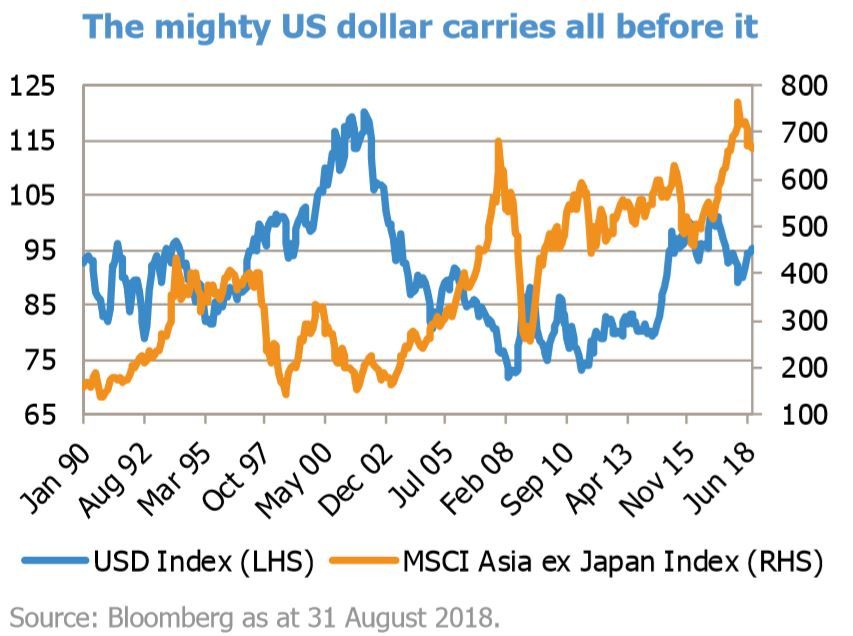Edge - the projecting ledge or brink, as of a cliff; the part farthest from the middle; line where something begins or ends; the verge or brink, as of a condition. During times of risk aversion prompted by tighter liquidity conditions, as geopolitical risks re-emerge and longterm trade agreements unravel, it is rational to get a sense of revulsion when stock market volatility increases with downside bias, in conjunction with a large sell-off in emerging market currencies.
The US dollar trade-weighted index is a near perfect proxy for liquidity conditions in emerging markets, which in turn impacts all underlying asset prices including equities.
There is now near unanimity that emerging markets are in a tough spot, after years of loose monetary policy that led to higher debt levels in several of those countries. When those debts are US dollar-denominated, it exposes the weakness and tension between capital flows, rising domestic inflation and slowing growth. The trade off, in a simplistic way of thinking about the conundrum, is that growth has to slow and savings have to be rebuilt (a current account surplus). That should be either by raising domestic interest rates or by letting the currency weaken. In some countries, like Argentina or Turkey, the measures have been drastic. In Asia, none of the countries is in that dire a state but the taint of emerging markets and increase in debt levels is the common thread.
The big concern for all of us, not just in Asia, surely remains how China manages this transition of tighter liquidity and slower growth? We came close to a similar looking edge in 2015/16. At that time, too, we appeared to be on the cusp of a hard landing. I distinctly recollect the scare when an unexpected change in the way China managed its currency led to fears of a meltdown, which further exacerbated capital outflows from China. By February/March 2017, with the US dollar appreciating, equity markets sold off aggressively, and we all thought this was the moment when China paid the price for its extreme indebtedness. A pause by the US Federal Reserve in its path of raising interest rates gave us the breathing space to come back from the edge. In that moment, it looked and felt like we were standing by a dark and bleak chasm, but, in hindsight, this turned out to be just another edge.
I have no clue whether the edge that we peer at today is a real precipice. As I’ve mentioned over the past couple of months, I have certainly reduced the portfolio’s cyclicality and added names that we perceive to be very resilient businesses. The challenge, as I see it, is not just over the resilience of the businesses we own but also on the ravages that liquidity induced sell-offs and currency depreciation will bring to markets. Caution prevails.
Samir Mehta, JOHCM Asia ex Japan Fund



